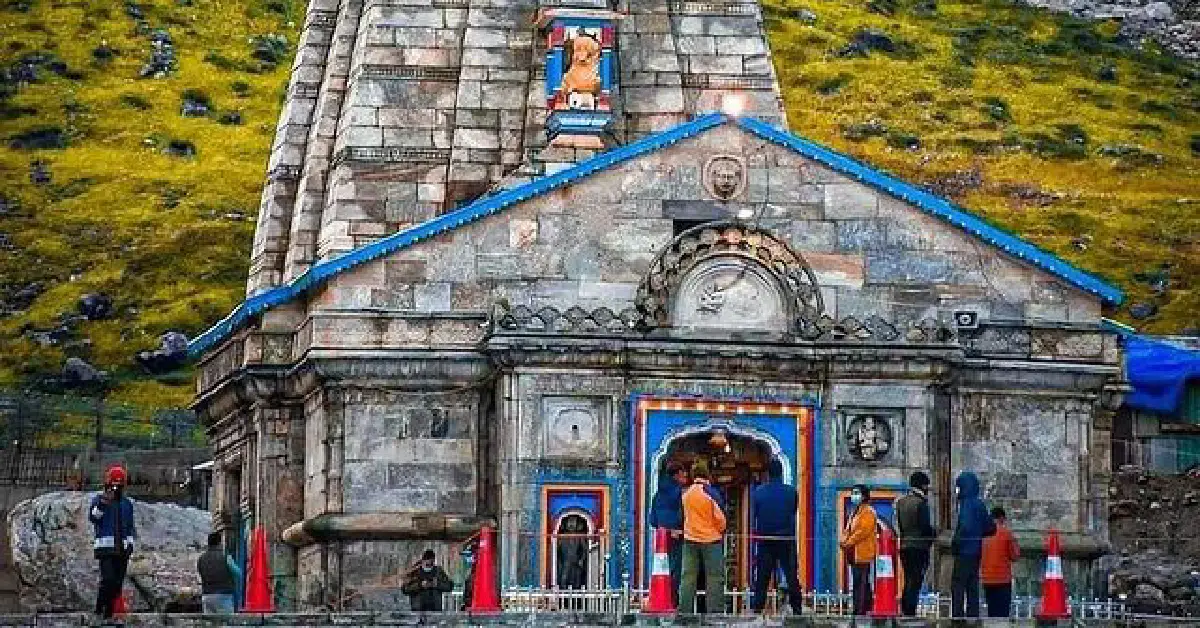Nestled in the majestic Himalayas of Uttarakhand, India, the Kedarnath Temple stands as one of the most revered pilgrimage sites for Hindus. Dedicated to Lord Shiva, this ancient temple is not only a significant religious destination but also a marvel of architecture and history. With its breathtaking surroundings and rich mythology, Kedarnath Temple attracts thousands of pilgrims and tourists each year, offering them a unique spiritual experience.
Historical Background
The origins of Kedarnath Temple are steeped in legend and mythology. According to Hindu beliefs, the temple was built by the Pandavas, the five brothers from the epic Mahabharata. After their victory in the Kurukshetra War, they sought forgiveness from Lord Shiva for the sins committed during the battle. Disguised as a bull, Shiva evaded them and disappeared into the earth at Kedarnath. The Pandavas were determined to find him, and Bhima, the strongest among them, managed to grasp Shiva’s hump as he vanished. This hump is believed to be enshrined in the current Kedarnath Temple, making it one of the twelve Jyotirlingas—sacred shrines dedicated to Lord Shiva.The temple’s construction is attributed to Adi Shankaracharya in the 8th century AD, who played a pivotal role in revitalizing Hindu philosophy and establishing key pilgrimage sites across India. Over centuries, Kedarnath Temple has undergone several renovations due to natural calamities like heavy snowfall and earthquakes, yet it has retained its spiritual essence.
Architectural Marvel
Kedarnath Temple is an architectural wonder that showcases traditional North Indian temple design. Built with gray stone slabs, its structure is interlocked without the use of mortar, relying instead on iron clamps for stability. The temple features a pyramidal roof and intricate carvings that depict various deities from Hindu mythology.Inside the temple lies a conical rock formation that represents Lord Shiva in his Sadashiva form. This lingam is worshipped by devotees who believe that it embodies divine energy. The temple complex also includes smaller shrines dedicated to other deities such as Parvati and the Pandavas.
Spiritual Significance
Kedarnath Temple holds immense significance for Hindus for several reasons:
- Jyotirlinga: As one of the twelve Jyotirlingas, Kedarnath represents a pillar of celestial light emanating from Lord Shiva. Pilgrims believe that visiting this sacred site brings spiritual benefits and liberation from sins.
- Part of Char Dham: Kedarnath is one of the four sites in the Char Dham pilgrimage circuit (along with Badrinath, Yamunotri, and Gangotri), which holds immense importance for devotees seeking spiritual fulfillment.
- Panch Kedar: Kedarnath is also recognized as one of the Panch Kedar temples, dedicated to different body parts of Lord Shiva’s bull form. It is believed that visiting all five sites grants devotees immense blessings.
The Pilgrimage Experience
Embarking on a pilgrimage to Kedarnath is not merely a journey; it is a transformative experience that connects individuals with their faith and nature. The trek to Kedarnath begins at Gaurikund, approximately 16 kilometers away from the temple. This trek takes pilgrims through stunning landscapes adorned with lush greenery and panoramic views of snow-capped peaks.For those unable to trek, helicopter services are available from Gaurikund to Kedarnath, providing an alternative means to reach this sacred site while enjoying breathtaking aerial views of the Himalayas.
Best Time to Visit
The temple typically opens for pilgrims between late April and early November, depending on weather conditions. The ideal time to visit is during summer (May to June) and early autumn (September to October) when temperatures are pleasant and skies are clear. Festivals such as Maha Shivaratri attract large crowds, adding vibrancy to the pilgrimage experience.
Environmental Challenges and Restoration Efforts
Kedarnath Temple has faced significant challenges due to environmental factors. In June 2013, devastating floods caused extensive damage to the region, leading to loss of life and infrastructure. In response, local authorities have initiated restoration efforts aimed at rebuilding damaged structures while preserving the temple’s sanctity.These efforts include improving access roads, enhancing facilities for pilgrims, and implementing sustainable tourism practices to protect the fragile ecosystem surrounding Kedarnath.
Local Culture and Community
The local community around Kedarnath is predominantly engaged in tourism-related activities and agriculture. The residents maintain a deep connection with their cultural heritage and traditions. Visitors can experience authentic Garhwali cuisine at local eateries that offer traditional dishes made from locally sourced ingredients.Engaging with locals provides travelers with insights into their customs and way of life while enriching their overall experience at this sacred site.
Conclusion
Kedarnath Temple stands as a testament to India’s rich spiritual heritage and natural beauty. As one of the holiest sites for Hindus, it continues to inspire devotion among millions who seek blessings from Lord Shiva amidst stunning Himalayan vistas. The combination of historical significance, architectural grandeur, and breathtaking surroundings makes Kedarnath Temple a must-visit destination for anyone traveling through this enchanting region.Whether you are on a pilgrimage or simply exploring the beauty of nature, Kedarnath offers an experience that resonates deeply within one’s spirit—a reminder of faith’s enduring power against nature’s grandeur.
FAQs About Kedarnath Temple
What is Kedarnath Temple known for?
Kedarnath Temple is dedicated to Lord Shiva and is one of the twelve Jyotirlingas in India. It holds immense spiritual significance for Hindus as part of both Char Dham and Panch Kedar pilgrimage circuits.
How do I reach Kedarnath Temple?
The temple can be reached by trekking approximately 16 kilometers from Gaurikund or by helicopter services available from Gaurikund.
When does Kedarnath Temple open?
The temple typically opens between late April and early November each year based on weather conditions.
What should I pack for my visit?
It’s advisable to pack warm clothing (especially if visiting during cooler months), sturdy trekking shoes, water bottles, snacks, a first-aid kit, and any personal items needed for prayer or rituals.
Are there accommodations available near Kedarnath?
Yes! There are guesthouses and lodges available near Kedarnath catering to pilgrims seeking accommodation during their visit.
What cultural experiences can I expect?
Visitors can engage with local customs through interactions with residents, enjoy traditional Garhwali cuisine at local eateries, and participate in temple rituals during their visit.
Is there an entry fee for visiting Kedarnath Temple?
No entry fee is charged for visiting Kedarnath Temple; however, donations for temple maintenance are appreciated.




